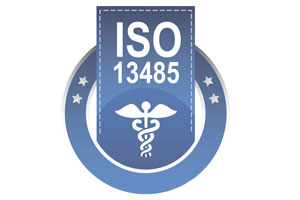The European Union has issued three basic directives on medical devices:
- Directive 90 / 385 / EEC: Active Implantable Medical Devices
- Directive 93 / 42 / EEC: Medical Devices
- Directive 98 / 79 / EC: In Vitro Diagnostic Medical Devices
Within the scope of harmonization with the European Union legislation, the regulations issued by the Ministry of Health are as follows:
- Medical Device Regulation (in 2007)
- In Vitro (Used Outside Body) Medical Diagnostic Devices Regulation (in 2007)
- Regulation on implantable active medical devices (in 2011)
Medical devices within the framework of these regulations are those devices which, when used on human beings, do not provide their essential function with pharmacological, chemical, immunological or metabolic effects. In this respect, they are used to diagnose, prevent, monitor, treat or alleviate a disease, or to diagnose, monitor, treat, or alleviate an injury. They are also used to investigate, change or replace an anatomical or physiological function, or for birth control purposes. For example, hospital equipment such as anesthesia equipment, MR equipment, surgical equipment, dental hand tools, dental implants and materials, measuring and diagnostic equipment, eye glasses and lenses, wheelchairs, Reusable materials are medical devices.
In vitro medical diagnostic devices include, for example, reagents used in pregnancy tests, reagents used to detect blood type, reagents used to diagnose AIDS, sample containers used to transport and store specimens from the human body.
Active implantable medical devices are devices that are permanently implanted in the human body and are a power source for operation. For example, pacemakers or diffusion pumps used in oncological applications are medical devices.
All organizations that produce exemplary medical devices or the like that fall within the scope of these regulations and provide technical support services related to these devices are obliged to establish ISO 13485 Medical Devices Quality Management System in their enterprises and have ISO 13485 Certificate.
These regulations exclude some medical devices. For example, products covered by the directives 65 / 65 / EEC and 89 / 381 / EEC issued by the European Union, cosmetic products covered by the 76 / 768 / EEC directive, and personal protective equipment covered by the 89 / 686 / EEC directive and human blood, blood products Plasma and blood cells and transplant of human or animal origin, tissue or cells are not covered by the medical device. Therefore, for organizations producing such products ISO 13483 Certificatei do not need to take.
All medical device manufacturers who want to establish ISO 13485 Medical Devices Quality Management System and have ISO 13485 Certificate, TÜRCERT Technical Control and Certification company, they will receive a fast, quality and reliable consulting service. You can immediately contact our company managers and employees to discuss which organizations should obtain ISO 13485 Certificate.

